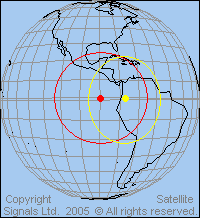| Home Login Register |
| Satellite Internet forum › Satellite Internet - Americas › How to get online in Cuba |
|
Pages: 1
|
How to get online in Cuba(Read 16378 times) |
|
Ex Member
Ex Member
|
Jun 2nd, 2006 at 3:26pm
|
| Back to top |
IP Logged
|
|
Ex Member
Ex Member
|
Reply #1 - Jun 3rd, 2006 at 2:55am
|
| Back to top |
IP Logged
|
|
Eric Johnston
Senior Member
★★★ Offline Posts: 2109 |
Reply #2 - Jun 3rd, 2006 at 2:56pm
|
| Back to top |
« Last Edit: Nov 16th, 2014 at 8:30pm by Admin1 »
IP Logged
|
|
Ex Member
Ex Member
|
Reply #3 - Jul 24th, 2006 at 6:05am
|
| Back to top |
IP Logged
|
|
Ex Member
Ex Member
|
Reply #4 - Oct 18th, 2006 at 3:01am
|
| Back to top |
IP Logged
|
|
Ex Member
Ex Member
|
Reply #5 - Oct 20th, 2006 at 7:50am
|
| Back to top |
IP Logged
|
|
Ex Member
Ex Member
|
Reply #6 - Oct 24th, 2006 at 7:22am
|
| Back to top |
IP Logged
|
|
pgannon
Senior Member
★★★ Offline Posts: 109 |
Reply #7 - Oct 31st, 2006 at 3:32pm
|
| Back to top |
IP Logged
|
|
Ex Member
Ex Member
|
Reply #8 - Oct 31st, 2006 at 4:21pm
|
| Back to top |
IP Logged
|
|
USN - Retired
YaBB Moderator
★★★★★ Offline Posts: 837 Kentucky (USA) |
Reply #9 - Oct 31st, 2006 at 6:06pm
|
| Back to top |
USN (Ret)
IP Logged
|
|
Ex Member
Ex Member
|
Reply #10 - Oct 31st, 2006 at 6:49pm
|
| Back to top |
IP Logged
|
|
USN - Retired
YaBB Moderator
★★★★★ Offline Posts: 837 Kentucky (USA) |
Reply #11 - Nov 1st, 2006 at 12:01am
|
| Back to top |
USN (Ret)
IP Logged
|
|
Ex Member
Ex Member
|
Reply #12 - Nov 1st, 2006 at 12:26am
|
| Back to top |
IP Logged
|
|
USN - Retired
YaBB Moderator
★★★★★ Offline Posts: 837 Kentucky (USA) |
Reply #13 - Nov 1st, 2006 at 1:48am
|
| Back to top |
« Last Edit: Nov 16th, 2014 at 8:32pm by Admin1 »
USN (Ret)
IP Logged
|
|
Ex Member
Ex Member
|
Reply #14 - Nov 1st, 2006 at 4:00am
|
| Back to top |
IP Logged
|
|
USN - Retired
YaBB Moderator
★★★★★ Offline Posts: 837 Kentucky (USA) |
Reply #15 - Nov 1st, 2006 at 5:02am
|
| Back to top |
« Last Edit: Nov 16th, 2014 at 8:33pm by Admin1 »
USN (Ret)
IP Logged
|
|
Ex Member
Ex Member
|
Reply #16 - Nov 1st, 2006 at 5:28am
|
| Back to top |
IP Logged
|
|
Ex Member
Ex Member
|
Reply #17 - Nov 1st, 2006 at 12:04pm
|
| Back to top |
IP Logged
|
|
Eric Johnston
Senior Member
★★★ Offline Posts: 2109 |
Reply #18 - Nov 1st, 2006 at 12:11pm
|
| Back to top |
IP Logged
|
|
Ex Member
Ex Member
|
Reply #19 - Nov 1st, 2006 at 12:26pm
|
| Back to top |
IP Logged
|
|
USN - Retired
YaBB Moderator
★★★★★ Offline Posts: 837 Kentucky (USA) |
Reply #20 - Nov 1st, 2006 at 3:58pm
|
| Back to top |
USN (Ret)
IP Logged
|
|
Ex Member
Ex Member
|
Reply #21 - Nov 2nd, 2006 at 12:48am
|
| Back to top |
IP Logged
|
|
USN - Retired
YaBB Moderator
★★★★★ Offline Posts: 837 Kentucky (USA) |
Reply #22 - Nov 2nd, 2006 at 4:19am
|
| Back to top |
USN (Ret)
IP Logged
|
|
pgannon
Senior Member
★★★ Offline Posts: 109 |
Reply #23 - Nov 2nd, 2006 at 4:45pm
|
| Back to top |
IP Logged
|
|
Ex Member
Ex Member
|
Reply #24 - Nov 2nd, 2006 at 6:04pm
|
| Back to top |
IP Logged
|
|
Pages: 1
|
Email me: eric@satsig.net
Powered by YaBB 2.5.2!
YaBB Forum Software © 2000-. All Rights Reserved.
Disclaimer, Terms of Use and Privacy Forum User Agreement Forum rules Cookie policy.




